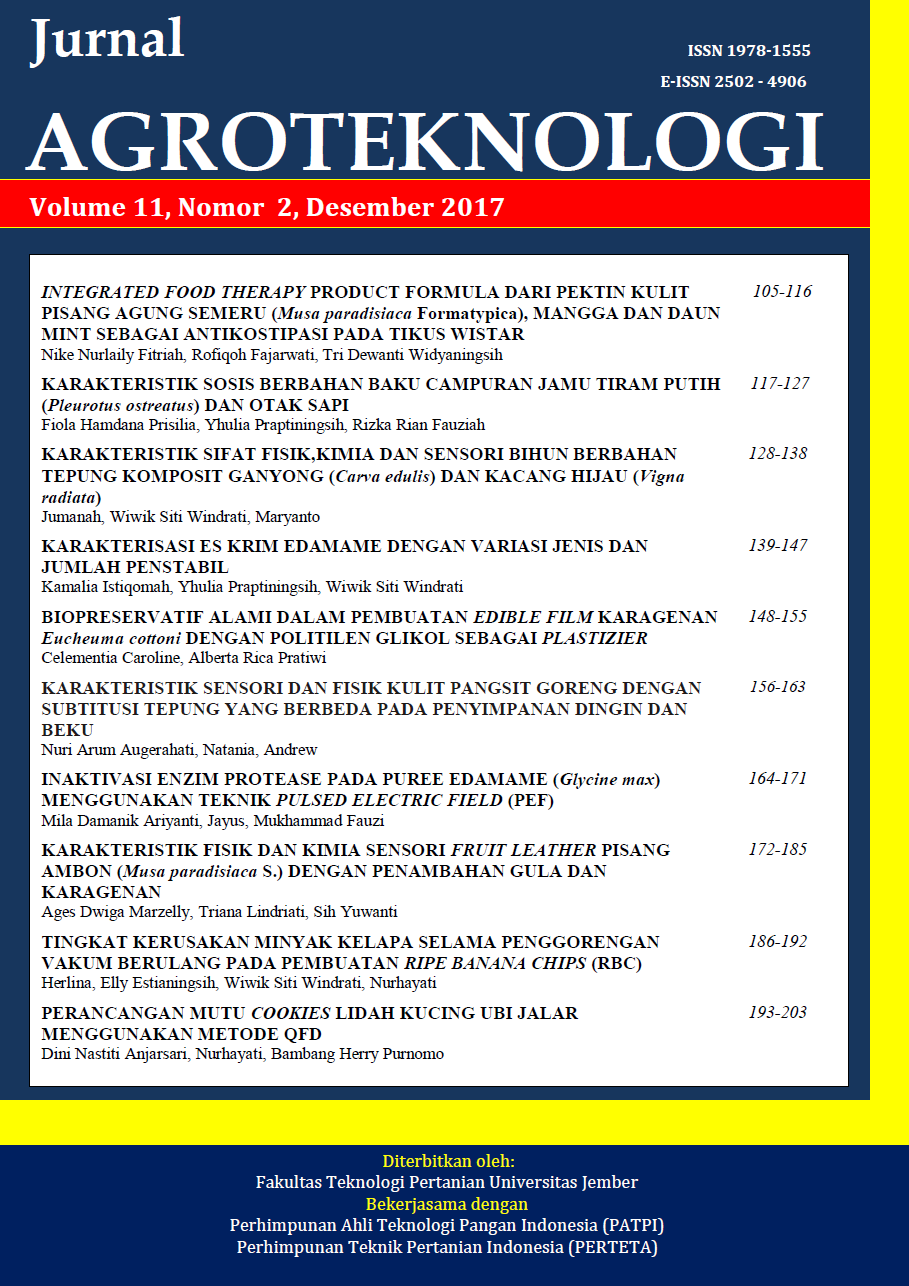KARAKTERISASI SIFAT FISIK, KIMIA DAN SENSORIS BIHUN BERBAHAN TEPUNG KOMPOSIT GANYONG (Canna edulis) DAN KACANG HIJAU (Vigna radiata)
Abstract
Vermicelli is a processed product with yarn forms which are made from rice flour. Canna flour can replace the main ingredient of rice flour in making vermicelli. The manufacture of vermicelli flour composite requires protein ingredients such as mung bean flour to increase the protein content of vermicelli. The purpose of this study is to determine the good ratio of manufacture of vermicelli made from canna and mung bean composite flour and knowing the best formulation based on the most preferred of vermicelli. The research is using Completely Random Design (CRD) one factor method that is canna flour and mung bean flour substitution with five variations treatments that is Controls (vermicelli rice commercial), P1 (60%:5%:35%), P2 (50%:15%:35%), P3 (40%:25%:35%), P4 (30%:35%:35%), P5 (20%:45%:35%). This research results indicate that the of canna flour and mung bean ratio effected on ash content, fat content, protein content, carbohydrate, color, rehydration, elasticity and organoleptic , but did not effected on moisture content, taste, flavor and overall. Vermicelli favored pains on P4 treatment (30%: 35%: 35%) produced had value of preferences color 5.46 (netral), flavor 5.46 (neutral), taste 5.23 (nettral), texture 5.92 (netral), overall 5.92. Chemical properties of moisture content 9.85%, ash content 0.05%, fat content 1.74%, protein content 9.83%, carbohydrate content 78.60%, and color (lightness) 54,94 , elasticity 7.32 %and power of Rehydration 24.77%.
Keywords: vermicelli, canna flour, mung bean flour, tapioca

This work is licensed under a Creative Commons Attribution-ShareAlike 4.0 International License.
Jurnal Agroteknologi has CC-BY-SA or an equivalent license as the optimal license for the publication, distribution, use, and reuse of scholarly work. Authors who publish with this journal retain copyright and grant the journal the right of first publication with the work simultaneously licensed under a Creative Commons Attribution-ShareAlike 4.0 International License that allows others to share the work with an acknowledgment of the work's authorship and initial publication in this journal.
 JURNAL AGROTEKNOLOGI
JURNAL AGROTEKNOLOGI 










.png)

